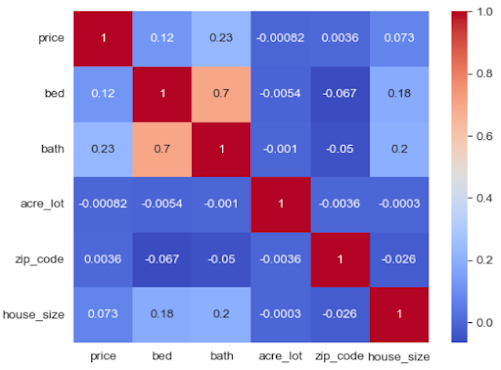For detailed dashboard review, please click on New York City Airbnb Datasets Tableau Dashboard Project
How Does
a Bike-Share Navigate Speedy Success?
Ask Questions:
1.
How do annual members and casual riders use
Cyclistic bikes differently?
2.
Why would casual riders buy Cyclistic annual
memberships?
3.
How can Cyclistic use digital media to influence
casual riders to become members?
As a junior data analyst, I have been assigned to answer the
first question: How do annual members and casual riders use Cyclistic bikes
differently?
Key stakeholders:
1.
Lily Moreno: The director of marketing
and my manager.
2.
Cyclistic executive team: The notoriously
detail-oriented executive team will decide whether to approve the recommended
marketing program.
Prepare:
1. Download the previous 12 months of Cyclistic trip data from the website called “divvy-tripdata”. The datasets are appropriate and organized. These data are reliable, original, comprehensive, current and cited. The data has been made available by motivate international Inc. under this license. By analyzing these data, I would be to find the connection between casual and member riders to identify the trends.
2.
Sorting and filtering the data: There are some
NULL cells in the tables and needs to be marked as N/A which will not be used in
the data analysis. Also, I removed the
blank cells by using filtering.
R-Studio:
# Install all the packages install.packages("tidyverse") install.packages("lubridate") install.packages("skimr") library(tidyverse) library(lubridate) library(ggplot2) library(dplyr) library(skimr)
Sep21 <- read.csv("202109-divvy-tripdata.csv") Oct21 <- read.csv("202110-divvy-tripdata.csv") Nov21 <- read.csv("202111-divvy-tripdata.csv") Dec21 <- read.csv("202112-divvy-tripdata.csv") Jan22 <- read.csv("202201-divvy-tripdata.csv") Feb22 <- read.csv("202202-divvy-tripdata.csv") Mar22 <- read.csv("202203-divvy-tripdata.csv") Apr22 <- read.csv("202204-divvy-tripdata.csv") May22 <- read.csv("202205-divvy-tripdata.csv") Jun22 <- read.csv("202206-divvy-tripdata.csv") Jul22 <- read.csv("202207-divvy-tripdata.csv") Aug22 <- read.csv("202208-divvy-tripdata.csv")
# Combine all files into one file called "totaltripdata" totaltripdata <- rbind(Sep21,Oct21,Nov21,Dec21,Jan22,Feb22,Mar22,Apr22,May22,Jun22,Jul22,Aug22)nrow(totaltripdata) # number of rows [1] 5883043 ncol(totaltripdata) # number of columns [1] 13 head(totaltripdata) # check the first 6 rows of the data frametail(totaltripdata) # check the last 6 rows of the data framesummary(totaltripdata) # statistical summary of the datacolnames(totaltripdata) # list of column names [1] "ride_id" "rideable_type" "started_at" "ended_at" "start_station_name" [6] "start_station_id" "end_station_name" "end_station_id" "start_lat" "start_lng" [11] "end_lat" "end_lng" "member_casual"# Aggregate the totaltripdata_2aggregate(totaltripdata_2$ride_length ~ totaltripdata_2$member_casual, FUN = mean) totaltripdata_2$member_casual totaltripdata_2$ride_length 1 casual 1758.0228 2 member 771.3398 aggregate(totaltripdata_2$ride_length ~ totaltripdata_2$member_casual, FUN = median) totaltripdata_2$member_casual totaltripdata_2$ride_length 1 casual 835 2 member 538 aggregate(totaltripdata_2$ride_length ~ totaltripdata_2$member_casual, FUN = max) totaltripdata_2$member_casual totaltripdata_2$ride_length 1 casual 2442301 2 member 89998 aggregate(totaltripdata_2$ride_length ~ totaltripdata_2$member_casual, FUN = min) totaltripdata_2$member_casual totaltripdata_2$ride_length 1 casual 0 2 member 0# Order the days of the week, set Sunday as the first day of the weektotaltripdata_2$day_of_week <- ordered(totaltripdata_2$day_of_week, levels=c("Sunday","Monday","Tuesday","Wednesday","Thursday","Friday","Saturday"))
# Plot the average duration of rides vs. day of week totaltripdata_2 %>% mutate(weekday = wday(started_at, label = TRUE)) %>% group_by(member_casual, weekday) %>% summarise(number_of_rides = n(), average_duration = mean(ride_length)) %>% arrange(member_casual, weekday) %>% ggplot(aes(x = weekday, y = average_duration, fill = member_casual)) + geom_col(position = 'dodge')
# Export the analyzed file into the work drivewrite.csv(totaltripdata_2, "data.csv")
Power BI Dashboard:
Conclusion:
1. During weekdays, member riders tend to ride bikes more often than casual riders because they are mainly using bikes for the home-work commutes. Casual riders ride bikes more than member riders during weekends because they have more available time to ride for leisure.
2. Casual riders ride bikes much longer than casual riders because they have a relatively steady start point and destination point (e.g. home and workplace).
To check the detail of this dashboard, please click here
US Real Estate Data Project
About the Dataset
This dataset contains Real Estate listings in the US broken by State and zip code. Data was collected via web scraping using python libraries by the author - Ahmed Shahriar Sakib.
The data set was updated one month ago.
Content
The data set has 1 CSV file with 12 columns: status, price, bed, bath, acre_lot, full_address, street, city, state, zip_code, house_size, and sold_date
Acknowledgments
Data was scraped from www.realtor.com, A real estate listing website operated by the News Corp subsidiary Move, Inc. and based in Santa Clara, California. It is the second most visited real estate listing website in the United States as of 2021, with over 100 million monthly active users.
Questions we can ask before planning this project:
Can we predict housing prices based on this data?
Which location contains the house with the highest prices?
What is the correlation between house prices and other attributes?
What could be the trend behind housing prices?
Project:
Step 1. Import all the packages.
Or, download the .csv file and then upload to Python from local drive
Stock Price of Top USA Banks Finance Data Project
In this project, I used Numpy, Pandas, Seaborn, Matplotlib, Pandas_datareader and Datetime to collect stock price data from Yahoo Finance, analyzed the data and obtain the visualization between the price and datetime of banks. Since the data was collected from Yahoo Finance, it is reliable and authenticated. However, the purpose of this project is only for study and analytics purpose, not for the realistic stock purchase purpose. The date of stock price data collected was from 1/1/2006 to 12/31/2016.
The imports:
Import the finance data from Yahoo Finance
Create the column names and concatenate these banks stock price tables
I used .xs function to find out the maximum close price for each bank's stock throughout the entire 2006 - 2016 period.
I used pct_change() function to create the new columns to show the return value of each bank's
Plot all stocks for all banks during 2006 - 2016






































